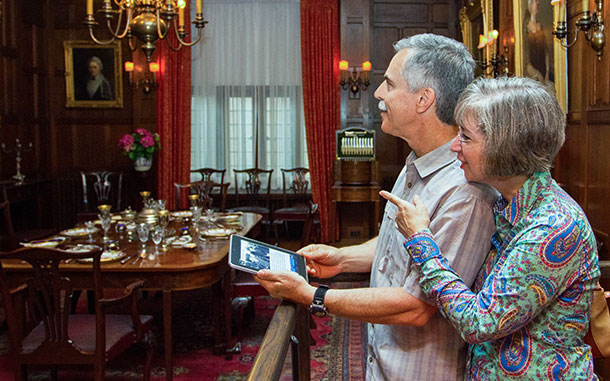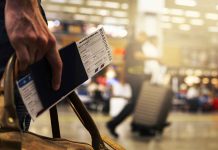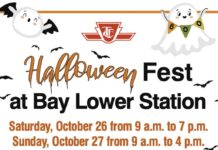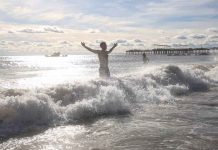

THUNDER BAY – TRAVEL – Ottawa: city of politicians, nice museums and, er, that’s it.
If that’s how you view your nation’s capital, think again. Here are six things about Canada’s fourth largest city you likely didn’t learn on that Grade Eight trip to watch Parliament in (in)action.
- For 29 years, cowboy crooner Lucky Ron has channeled the likes of Johnny Cash and Stompin’ Tom Connors every Saturday afternoon. That’s long enough for older fans to bring their grown kids to the Chateau Lafayette, Ottawa’s oldest tavern. The beer-refreshed regulars repeat the sober truths of Ron’s patter word for word – hardly a stretch since the show’s appeal is its constancy – and they join in on rousing renditions of such classics as “Ring of Fire” and “Tilsonburg.” But get there early. The tiny space gets jammed with college kids, punks, soldiers, bank tellers, nurses, computer programmers – maybe a public servant or two, though they leave their bland at home.
- Ottawa is Canada’s most rural city. No doubt the Central Experimental Farm is the best known of the 1,100 working farms inside city limits. Scientists there have developed such agricultural advances as winter-hardy Marquis wheat, which opened the Canadian prairies, and instant mashed potatoes, which saved many a kitchen klutz. Today, newlyweds flock for wedding photos among the farm’s ornamental gardens and arboretum of 600 species of trees and shrubs. But there’s also Lyle Slater’s Upper Canada Cranberries, eastern Ontario’s only cranberry bog, and the only urban sugar bush in North America, located at the Muséoparc Vanier.
- Le Cordon Bleu’s first campus outside France opened in Ottawa in 1988. Located in the 1874 Tudor-style Munross Mansion, it’s Cordon Bleu’s only North American diploma-granting institute, with students from 70 nations descending for months of cheffy training. But it also offers half-day courses for everyone else – preparing canapes, say, or Christmas cookies. If you prefer your food whipped up by pros, there’s a top-notch restaurant with prices to match – though Wednesday’s dinner special is a relative bargain at $110 for two, including wine. For more modest student-prepped fare, try Algonquin College, where hospitality students serve three-course lunch and dinner menus during the academic term.
- Join the smart set in Canada’s best educated city. Ottawa universities offer things even the most slacker of tourists will enjoy. The University of Ottawa’s Museum of Classical Antiquities hosts thousands of artefacts – ceramics to coins, friezes to firearms – reflecting life in ancient Greece and Rome. Carleton University’s art gallery holds one of the nation’s largest university art collections, specializing in contemporary and historic Canadian art. (While there, scamper cross-campus to the greenhouses to see thousands of plant species.) At the National Autonomous University of Mexico in Gatineau, frequent film screenings, musical performances and art exhibits reflect a Latin American bent.
- Nah, you’re not gonna score an invite for tea at 24 Sussex Dr., the prime ministerial pad.

But how about a cuppa where not one but two former prime ministers called home? Laurier House, a national historic site, was the official residence of both Wilfrid Laurier and William Lyon Mackenzie King. What you’ll see is the actual stuff the two men lived with – from a prayer bench supposedly used by Mary Queen of Scots to the crystal ball King used to make decisions. And beginning in June 2015, you’ll be able to book an exclusive “white glove” tour, handling priceless china and silver, seeing a couple of places off-limits to ordinary visitors, and sipping tea on the stately front veranda. Only in Canada, you say? No pity there.
- Ottawa has always been inventive. Thomas Ahearn, who brought public transit to Ottawa, invented the electric stove; the first meal was cooked at a downtown hotel. Thomas Willson invented both carbide and the acetylene torch; he’d escape to his cottage in the Gatineau, today the prime minister’s retreat, Meech Lake. Physicist Hugh LeCaine helped develop radar, but he’s best known for creating the world’s first music synthesizer. John Hopps invented the pacemaker; Maurice Levy developed the automated postal sorter; Donald Hings created the walkie-talkie – all in Ottawa. And invention continues today: Bruce Murison, a former Nortel engineer, developed We-Vibe, the first vibrator for couples.
And to think journalist Allan Fotheringham once dubbed Ottawa “the town that fun forgot.”
By Peter Johansen
Travel Writer
Troy Media






